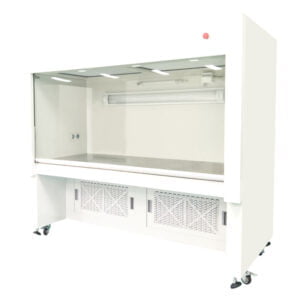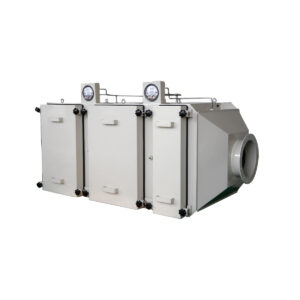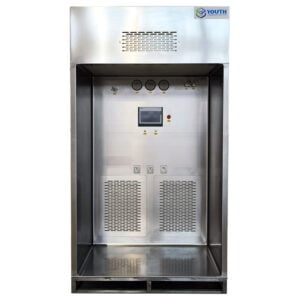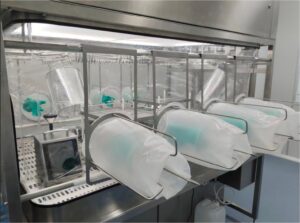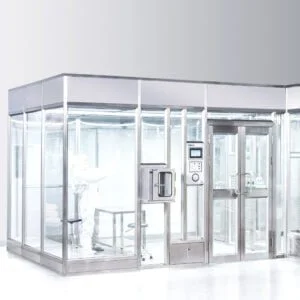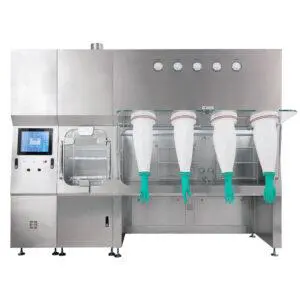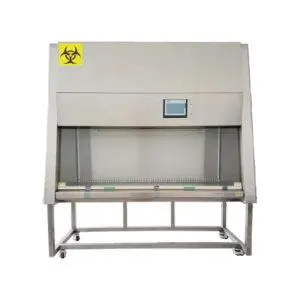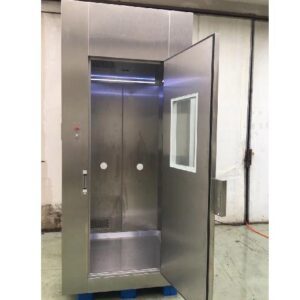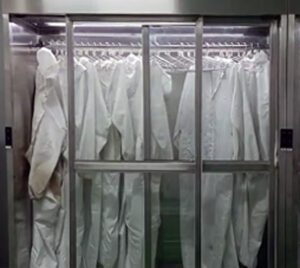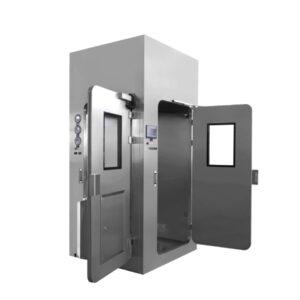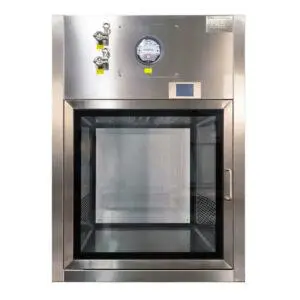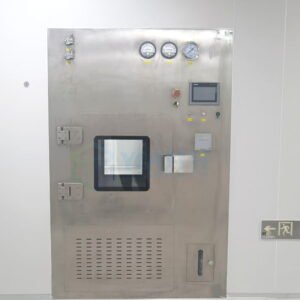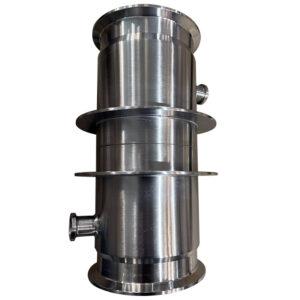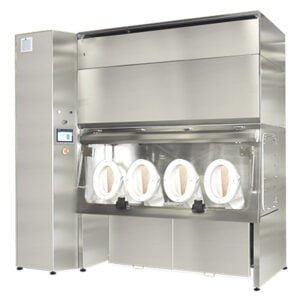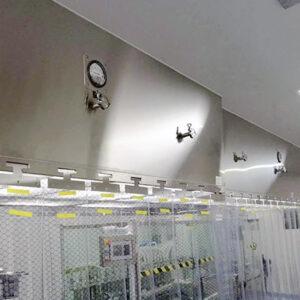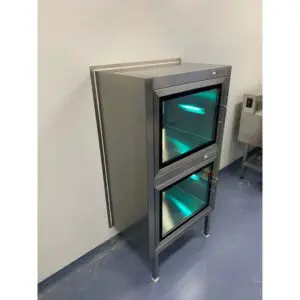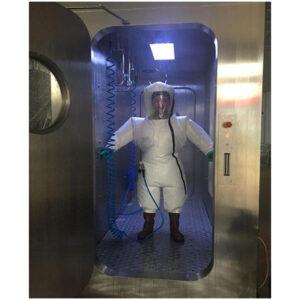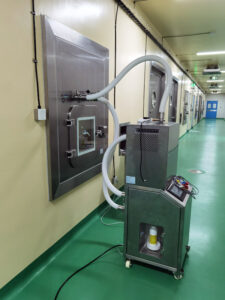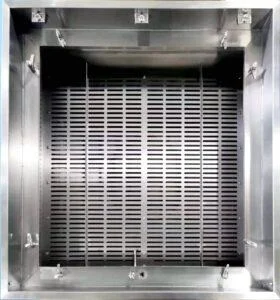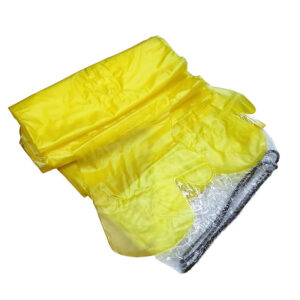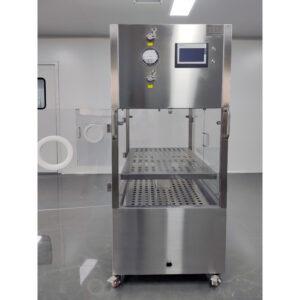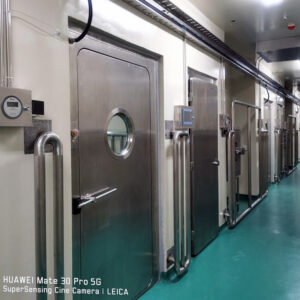In the realm of cleanroom technology, the validation of Laminar Air Flow (LAF) garment cabinets stands as a critical process to ensure the integrity of controlled environments. As industries ranging from pharmaceuticals to semiconductors increasingly rely on contamination-free spaces, the importance of properly validated LAF garment cabinets cannot be overstated. These cabinets serve as the first line of defense against particulate contamination, providing a sterile storage environment for cleanroom garments and accessories.
The validation of LAF garment cabinets encompasses a series of rigorous protocols designed to verify their performance, reliability, and compliance with industry standards. These protocols are not merely procedural formalities; they are essential safeguards that protect the quality of products manufactured in cleanroom environments. From initial installation qualification to ongoing performance verification, each step in the validation process plays a crucial role in maintaining the cleanliness levels required for sensitive operations.
As we delve deeper into the intricacies of LAF garment cabinet validation, we'll explore the key protocols that form the backbone of this critical process. These protocols ensure that cabinets maintain proper airflow, filtration efficiency, and particulate control, ultimately contributing to the overall success of cleanroom operations. Understanding these validation protocols is essential for facility managers, quality assurance professionals, and anyone involved in cleanroom management.
The validation of LAF garment cabinets is a multifaceted process that requires meticulous attention to detail and adherence to established industry standards. It involves a comprehensive series of tests and documentation procedures to ensure that cabinets meet or exceed performance specifications.
What are the key components of LAF garment cabinet validation protocols?
The validation of LAF garment cabinets is built upon several crucial components, each playing a vital role in ensuring the cabinet's effectiveness and reliability. At its core, the validation process begins with a thorough understanding of the cabinet's design specifications and intended use within the cleanroom environment.
Key components of the validation protocols include installation qualification (IQ), operational qualification (OQ), and performance qualification (PQ). These stages form the foundation of a robust validation strategy, ensuring that the cabinet is installed correctly, operates as intended, and consistently performs to the required standards.
The IQ phase involves verifying that the cabinet is installed according to manufacturer specifications and applicable standards. This includes checking electrical connections, air supply systems, and any associated control systems. The OQ phase tests the cabinet's functionality under various operating conditions, while the PQ phase evaluates long-term performance and consistency.
Proper validation of LAF garment cabinets is essential for maintaining the integrity of cleanroom environments and ensuring compliance with regulatory requirements. A well-executed validation protocol provides documented evidence that the cabinet consistently meets its intended performance criteria.
Table: Key Components of LAF Garment Cabinet Validation
| Component | Description | Importance |
|---|---|---|
| IQ | Installation Qualification | Ensures proper setup and installation |
| OQ | Operational Qualification | Verifies functionality under various conditions |
| PQ | Performance Qualification | Evaluates long-term consistency and reliability |
These components work in concert to create a comprehensive validation framework, providing assurance that the LAF garment cabinet will perform its critical function of maintaining a particle-free environment for cleanroom garments.
How does airflow assessment factor into validation protocols?
Airflow assessment is a cornerstone of LAF garment cabinet validation protocols. The effectiveness of a LAF cabinet hinges on its ability to maintain a unidirectional airflow that sweeps particles away from the stored garments. This assessment is crucial in verifying that the cabinet can consistently provide the clean environment necessary for storing sensitive cleanroom attire.
During the validation process, airflow is evaluated through various methods, including smoke tests and airflow velocity measurements. These tests help visualize the airflow patterns within the cabinet and ensure that there are no dead spots or turbulent areas that could compromise the cabinet's performance.
Technicians use calibrated instruments to measure air velocity at multiple points across the cabinet's face. These measurements must fall within specified ranges to meet validation criteria. Additionally, the uniformity of airflow is assessed to ensure consistent protection across the entire storage area.
Accurate airflow assessment is critical for validating LAF garment cabinets. It ensures that the cabinet can maintain the required cleanliness levels and prevent contamination of stored garments, which is essential for YOUTH and other cleanroom equipment manufacturers.
Table: Airflow Assessment Parameters for LAF Garment Cabinets
| Parameter | Typical Range | Purpose |
|---|---|---|
| Air Velocity | 0.3 – 0.5 m/s | Ensures proper particle removal |
| Uniformity | ±20% of average | Maintains consistent protection |
| Smoke Test | Visual confirmation | Verifies unidirectional flow |
The results of these airflow assessments are meticulously documented as part of the validation protocol, providing a clear record of the cabinet's performance capabilities and serving as a baseline for future performance checks.
What role does particle counting play in validation protocols?
Particle counting is an indispensable component of LAF garment cabinet validation protocols. It provides quantitative data on the cabinet's ability to maintain a particle-free environment, which is crucial for protecting cleanroom garments from contamination. This process involves using specialized particle counters to measure the number and size of particles present within the cabinet under various operating conditions.
During validation, particle counts are typically performed at rest (with the cabinet running but unoccupied) and in operation (simulating normal use conditions). These measurements are taken at multiple locations within the cabinet to ensure comprehensive coverage and identify any potential weak points in the filtration system.
The data collected from particle counting is compared against established cleanliness standards, such as ISO 14644-1, which defines cleanliness classes for cleanrooms and associated controlled environments. Meeting these standards is essential for demonstrating that the LAF garment cabinet can maintain the required level of cleanliness.
Particle counting is a critical aspect of LAF garment cabinet validation, providing concrete evidence of the cabinet's filtration efficiency and its ability to maintain a contaminant-free storage environment for sensitive cleanroom garments.
Table: Particle Count Limits for Different ISO Classes
| ISO Class | Maximum Particles/m³ ≥0.5μm | Maximum Particles/m³ ≥5.0μm |
|---|---|---|
| ISO 5 | 3,520 | 29 |
| ISO 6 | 35,200 | 293 |
| ISO 7 | 352,000 | 2,930 |
These particle count limits serve as benchmarks for validating the performance of LAF garment cabinets, ensuring they meet the stringent requirements of cleanroom environments.
How are filtration systems evaluated in validation protocols?
The evaluation of filtration systems is a critical aspect of LAF garment cabinet validation protocols. The filters are the heart of the cabinet's ability to provide clean air, and their performance directly impacts the overall effectiveness of the unit. Validation protocols include rigorous testing of the filtration system to ensure it meets the required standards for particle removal efficiency.
During the validation process, filters are subjected to a series of tests, including integrity testing and efficiency measurements. The most common test for high-efficiency particulate air (HEPA) filters is the DOP (Dioctyl Phthalate) test, which measures the filter's ability to capture particles of a specific size range.
Filter integrity is also assessed through visual inspections and pressure drop measurements. These checks help identify any physical defects or improper sealing that could compromise the filter's performance. Additionally, the validation process includes verifying that the filtration system can maintain proper air pressure differentials to prevent the ingress of contaminants.
Thorough evaluation of filtration systems is essential for ensuring the long-term performance and reliability of LAF garment cabinets. It provides assurance that the cabinet can consistently deliver the required level of air cleanliness for storing sensitive cleanroom garments.
Table: Filtration System Evaluation Parameters
| Parameter | Test Method | Acceptance Criteria |
|---|---|---|
| HEPA Filter Efficiency | DOP Test | ≥99.97% for 0.3μm particles |
| Filter Integrity | Visual Inspection | No visible defects or leaks |
| Pressure Drop | Manometer Measurement | Within manufacturer specs |
These evaluations are crucial for validating the Validation protocols of LAF garment cabinets, ensuring they can maintain the high standards required for cleanroom operations.
What environmental monitoring is required for validation?
Environmental monitoring plays a pivotal role in the validation protocols for LAF garment cabinets. It involves continuous or periodic assessment of various environmental parameters that could affect the cabinet's performance and the integrity of stored garments. This monitoring is essential for ensuring that the cabinet maintains the required cleanliness levels over time and under different operating conditions.
Key environmental factors monitored during validation include temperature, humidity, and differential pressure. Temperature and humidity are critical because they can affect the growth of microorganisms and the electrostatic properties of particles, potentially impacting the cabinet's cleanliness. Differential pressure monitoring ensures that the cabinet maintains positive pressure relative to its surroundings, preventing the ingress of contaminants.
Validation protocols often require the installation of environmental monitoring systems that can provide real-time data and alert operators to any deviations from specified parameters. This continuous monitoring helps identify trends or issues that could compromise the cabinet's performance before they become critical problems.
Comprehensive environmental monitoring is a crucial component of LAF garment cabinet validation, providing ongoing assurance that the cabinet maintains the required environmental conditions for storing cleanroom garments safely.
Table: Environmental Monitoring Parameters for LAF Garment Cabinets
| Parameter | Typical Range | Monitoring Frequency |
|---|---|---|
| Temperature | 18-22°C | Continuous |
| Relative Humidity | 30-60% | Continuous |
| Differential Pressure | >5 Pa | Continuous |
These environmental parameters are carefully controlled and documented as part of the validation process, ensuring that LAF garment cabinets provide a stable and suitable environment for storing sensitive cleanroom attire.
How are cleaning and maintenance procedures validated?
Validation of cleaning and maintenance procedures is an essential aspect of LAF garment cabinet protocols. These procedures are critical for maintaining the cabinet's performance and cleanliness over time. The validation process ensures that the cleaning and maintenance protocols are effective, reproducible, and capable of preserving the cabinet's validated state.
During the validation of cleaning procedures, the effectiveness of cleaning agents and techniques is evaluated. This typically involves deliberately contaminating surfaces within the cabinet and then applying the cleaning protocol to verify its ability to remove contaminants. Swab tests and surface particle counts are often used to quantify the cleaning efficacy.
Maintenance procedures are validated to ensure they can be performed without compromising the cabinet's cleanliness or functionality. This includes validating filter change procedures, calibration of monitoring equipment, and any routine adjustments required for optimal performance.
Proper validation of cleaning and maintenance procedures is crucial for ensuring the long-term reliability and performance of LAF garment cabinets. It provides confidence that the cabinet can be effectively maintained in a state of cleanliness and functionality throughout its operational life.
Table: Validation Aspects for Cleaning and Maintenance Procedures
| Aspect | Validation Method | Acceptance Criteria |
|---|---|---|
| Cleaning Efficacy | Surface sampling | Particle counts below specified limits |
| Residue Testing | Chemical analysis | No detectable residues |
| Maintenance Impact | Before/after performance testing | No degradation in cabinet performance |
These validated procedures form an integral part of the overall quality management system for LAF garment cabinets, ensuring their continued compliance with cleanliness standards.
What documentation is required for LAF garment cabinet validation?
Documentation is a cornerstone of LAF garment cabinet validation protocols. Comprehensive and accurate documentation provides a clear audit trail, demonstrating that all aspects of the validation process have been thoroughly executed and that the cabinet meets all necessary performance criteria. This documentation is not only essential for internal quality assurance but also for regulatory compliance and inspections.
The validation documentation typically includes a validation master plan, which outlines the overall validation strategy and approach. Individual protocols for IQ, OQ, and PQ are developed, detailing the specific tests, acceptance criteria, and methodologies used in each phase of validation. These protocols are executed, and the results are recorded in validation reports.
Standard Operating Procedures (SOPs) for routine operation, cleaning, and maintenance are also developed and validated as part of this process. These documents provide step-by-step instructions for all activities related to the LAF garment cabinet, ensuring consistency and compliance with validated procedures.
Thorough and well-organized documentation is crucial for demonstrating the validated status of LAF garment cabinets. It provides a comprehensive record of the cabinet's performance capabilities and serves as a reference for future revalidation efforts.
Table: Key Documentation Components for LAF Garment Cabinet Validation
| Document Type | Purpose | Contents |
|---|---|---|
| Validation Master Plan | Overall strategy | Scope, approach, responsibilities |
| IQ/OQ/PQ Protocols | Test procedures | Test methods, acceptance criteria |
| Validation Reports | Results documentation | Test data, conclusions, deviations |
| SOPs | Operational guidance | Step-by-step procedures |
These documents collectively form the validation package, providing a complete record of the LAF garment cabinet's qualification and ongoing performance assurance.
In conclusion, the validation of LAF garment cabinets is a complex and multifaceted process that is essential for maintaining the integrity of cleanroom environments. From rigorous airflow assessments and particle counting to comprehensive filtration system evaluations and environmental monitoring, each aspect of the validation protocol plays a crucial role in ensuring the cabinet's performance and reliability.
The importance of thorough documentation cannot be overstated, as it provides the necessary evidence of compliance and serves as a foundation for ongoing quality assurance. By adhering to these validation protocols, facilities can ensure that their LAF garment cabinets consistently meet the stringent requirements of cleanroom operations, ultimately contributing to the production of high-quality, contamination-free products.
As cleanroom technology continues to evolve, so too will the validation protocols for LAF garment cabinets. Staying informed about the latest industry standards and best practices is crucial for maintaining the effectiveness of these essential cleanroom components. By prioritizing robust validation processes, organizations can safeguard the quality of their cleanroom operations and maintain compliance with regulatory requirements.
Ultimately, the meticulous validation of LAF garment cabinets is not just a regulatory requirement—it's a commitment to quality, safety, and excellence in cleanroom manufacturing. As industries continue to push the boundaries of precision and purity in their processes, the role of properly validated LAF garment cabinets will remain paramount in maintaining the standards of cleanliness that modern technology demands.
External Resources
How to Write a Validation Protocol? – Pharmaguideline – This article provides a detailed guide on how to write a validation protocol, including sections on protocol approval, objective, scope, reason for validation, revalidation criteria, responsibilities, and more.
Process Validation in the Pharmaceutical Industry | SafetyCulture – This resource explains the three stages of process validation (process design, process qualification, and continued process verification) and the four types of process validation (prospective, retrospective, concurrent, and revalidation).
Writing Validation Protocols for Medical Devices – Freyr – This article outlines the steps and elements involved in creating a validation protocol for medical devices, including defining the device, identifying elements for validation, and conducting activities at the designated site.
Step-by-Step Analytical Methods Validation and Protocol in the Quality System Compliance Industry – This PDF document provides a detailed step-by-step guide on analytical methods validation, including the purpose, scope, and overview of the validation study.
Validation of Analytical Procedures: Text and Methodology – ICH – This resource from the International Council for Harmonisation (ICH) offers guidelines on the validation of analytical procedures, which is crucial for ensuring the quality and reliability of analytical methods.
FDA Process Validation: General Principles and Practices – FDA – The FDA's guidance document on process validation provides general principles and practices for validating manufacturing processes, ensuring compliance with regulatory requirements.
Validation of Pharmaceutical Processes – ISPE – This resource from the International Society for Pharmaceutical Engineering (ISPE) offers guidance and best practices for the validation of pharmaceutical processes, aligning with industry standards.
EU Guidelines for Good Manufacturing Practice for Medicinal Products for Human and Veterinary Use – EMA – The European Medicines Agency (EMA) guidelines for Good Manufacturing Practice (GMP) include sections on process validation, ensuring that medicinal products are consistently produced and controlled according to quality standards.
Related Contents:
- LAF Garment Cabinets: Meeting ISO 14644 Standards
- LAF Garment Cabinet Performance Monitoring Tips
- LAF Garment Cabinets for Various Cleanroom Classes
- LAF Garment Cabinets in Pharmaceutical Manufacturing
- LAF Garment Cabinets for Aerospace Manufacturing
- Laminar Airflow in LAF Garment Cabinets Explained
- Laminar Airflow in LAF Garment Cabinets Explained
- LAF Garment Cabinets: ASHRAE Standards Compliance
- LAF Garment Cabinets: Cleanroom Storage Solutions


